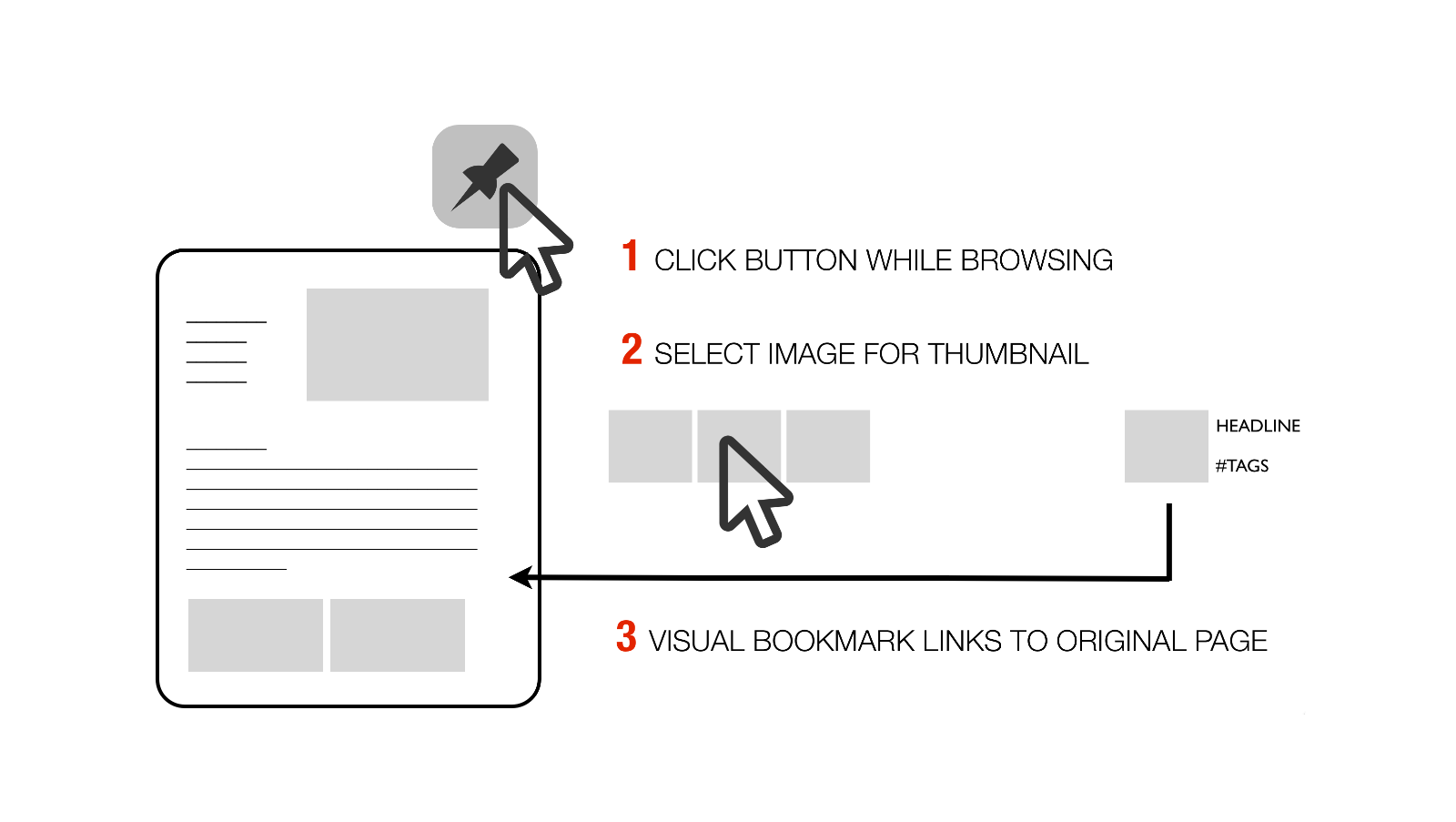
Anything to do with links is core to the web and social bookmarking is about storing and sharing links. The UX convention for this was not technically possible, however, until Javascript bookmarklets were allowed within web browsers. This triggered the development of text based social bookmarking systems such as delicious.
I realized that you could use this to form the basis of an image rather than text based bookmarking system and that this could form the basis of social shopping.
To implement this principal, I created a bookmarklet that used javascript to reformat the web page you were browsing as a grid of thumbnail sized versions of the images on it. By making these images themselves the select buttons in a submitable form, you could create a social network for images that would distill the primary user experience for contributing content to 2 clicks.
Like most ubiquitous UX conventions there had to be an emotional element, however trivial, to initiate it’s spread. I realized while testing the system that shrinking, storing and collecting a smaller version of an image to represent a page just by clicking, has a satisfying feel to it, rather like placing a piece in a jigsaw puzzle. This reward for effort would be enough to create a viral system.
After leaving MRL Ventures where I co-founded Yelp, I launched Wists, a social shopping site which became the basis for the concept of Pinterest, 5 years later. More about the origins of visual bookmarking is on Gigaom.